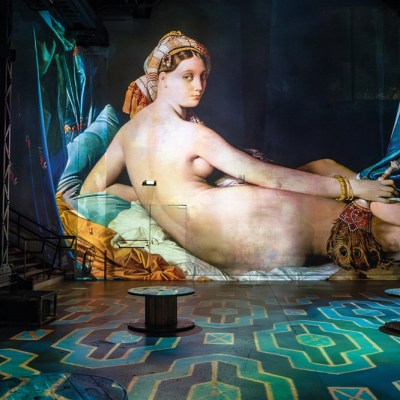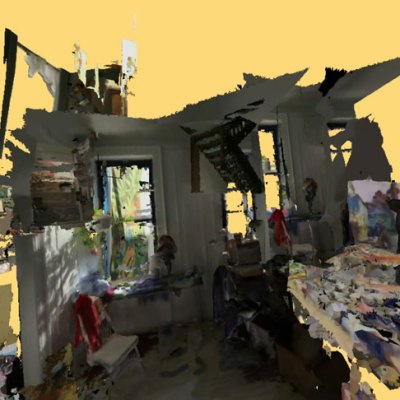Every rave needs a rave casualty. Standing in the darkened space of Birmingham Museum and Art Gallery as I’m being strapped into my haptic vest, fitted with a VR headset and headphones, and handed two joystick-like controllers, I suddenly worry that it’s me. As someone who occasionally gets motion-sick just watching a 14-year-old roam through Fortnite, what if the full 3D-immersion of Darren Emerson’s In Pursuit of Repetitive Beats – a 40-minute virtual reconstruction of a late ’80s rave – gets too much and I have to lie down in a corner with a bottle of water waiting for my inner ear to chill out? Even more stressful, am I going to have to dance like no one’s watching – apart from the gallery staff?
A viewer taking part in the virtual reality experience In Pursuit of Repetitive Beats (2024) by Darren Emerson at the Birmingham Museum and Art Gallery. Photo: David Rowan; courtesy East City Films
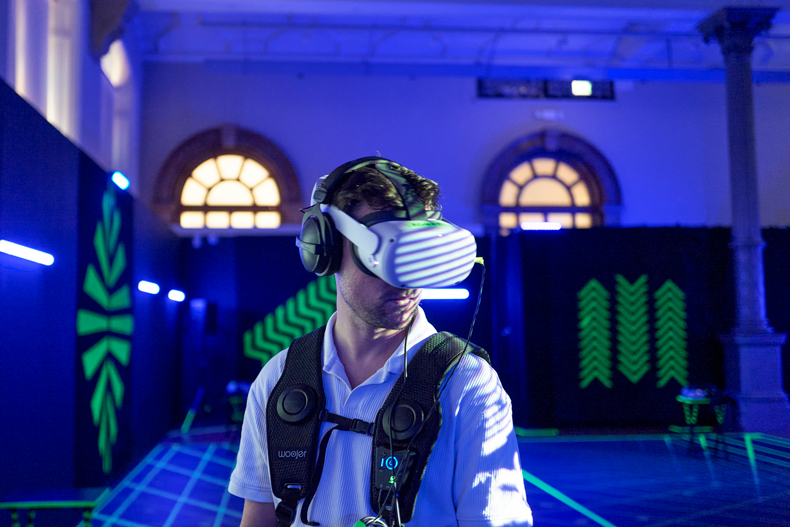
Once equipped and connected, I am dropped into a typical night out for three young ravers in Coventry. I follow them from their sofas to their car and we bomb down the motorway to that evening’s temporary utopia, set up in a cavernous strobe-lit warehouse that throbs to Joey Beltram’s ‘Energy Flash’. This basic outline is fleshed out with a wealth of history specific to the West Midlands scene in 1989. You progress through the scenes by interacting with the scenery: answering a ringing payphone to get the rendezvous, or pinning photos to a notice board. The photos come to life and feature DJs, MCs and ravers from Coventry and Birmingham sharing their memories of the era. ‘You get a lot of people coming here thinking they’re going to be in a VR rave,’ Emerson tells me later. ‘Then they come out and go, “Oh, I was in a documentary”.’
Installation view of In Pursuit of Repetitive Beats (2024) by Darren Emerson at the Birmingham Museum and Art Gallery. Photo: David Rowan; courtesy East City Films
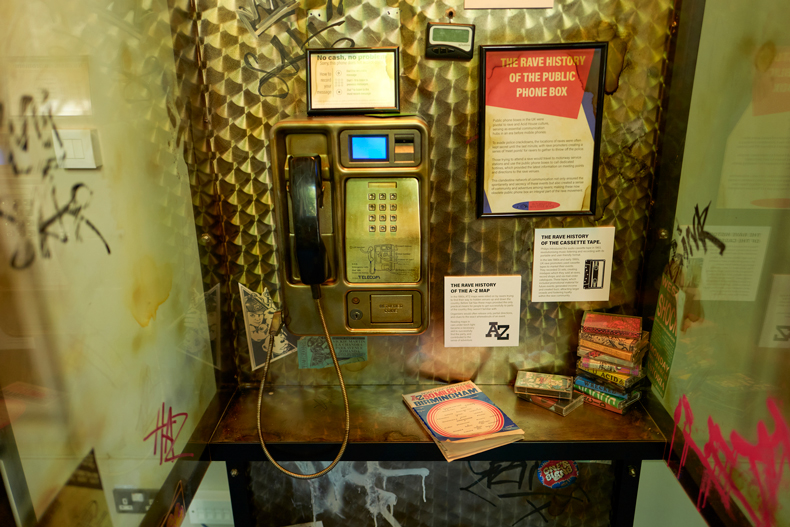
Historical reality aside, the more psychedelic and unreal Emerson makes his virtual reality, the better it works. Sitting in the car with my three new friends, or standing in a police station as local cops tried to track down the rave, I get the feeling – looking at the faces around me – of a video game that is not yet fully rendered. Still, hanging suspended in an infinite cosmos of glowing baubles, each pulsing to Orbital’s ‘Chime’, is a trip – as is the moment when I float slowly through the roof of a Peugeot 305 to look down on a phalanx of panda cars converging on ravers who are themselves heading en masse in one direction. Their destination: a huge pulsating orb on the horizon, eventually revealed to be a huge eye with an ‘acid smiley’ for an iris.
Installation view of In Pursuit of Repetitive Beats (2024) by Darren Emerson at the Birmingham Museum and Art Gallery. Photo: David Rowan; courtesy East City Films

Scale is repeatedly and surreally manipulated: you might be shrunk down to cruise the vinyl grooves of a spinning 12” record, or pace up and down a giant FM dial to tune into pirate radio. The aesthetics draw brilliantly on the visual themes that characterised rave flyers of the era, in particular the kind of glowing wire-frame grids seen in TRON (1982), which designers for Dreamscape and other rave organisers used to evoke the feeling of heading for a limitless futurist frontier.
A still from the virtual reality experience In Pursuit of Repetitive Beats (2024) by Darren Emerson. Courtesy East City Films

Living as we do in overlapping eras, with Gen Z internet natives existing alongside Gen Xers who still remember having one landline phone to a household, Repetitive Beats works for two kinds of audience: it’s educational for those who never experienced rave when it was a counterculture, and a deep nostalgia trip for those who did. But Emerson’s project is also timely, coming 30 years after the 1994 Criminal Justice and Public Order Act, legislation specifically designed to curb the unlicensed parties and gatherings that had thrived since the Ecstasy- and acid house-fuelled ‘Summer of Love’ in 1988. It’s a reminder of just how meagre and impoverished UK nightlife has become, with even its most regulated spaces under threat. As city centres have been redeveloped to become more residential, nightclubs and after-hours venues have increasingly been hit by noise complaints; councils have offered little support, happy to see their nightlife economy dwindle in exchange for less anxiety over anti-social side-effects – politically and literally a quieter life.
A still from the virtual reality experience In Pursuit of Repetitive Beats (2024) by Darren Emerson. Courtesy East City Films
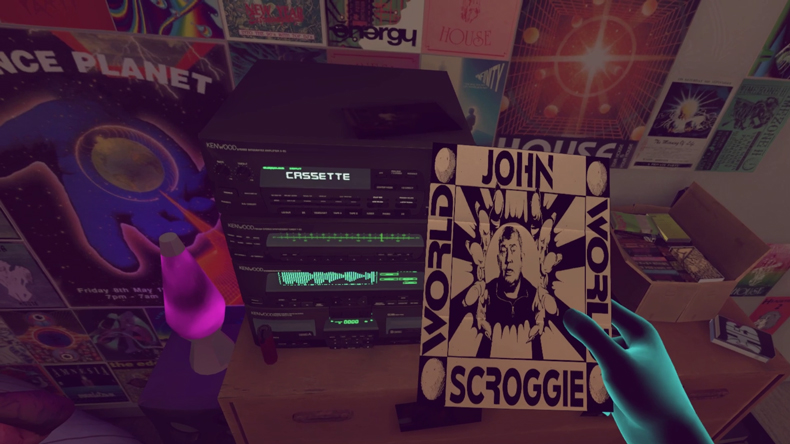
As immersive, evocative and brilliantly realised as it often is, Repetitive Beats remains a guided tour, an experience with guardrails; anyone who’s ever bumped up against the boundaries of video-game topography will recognise the feeling. And, true to the rave experience, after the high there is a comedown. Like a cosmonaut returning from inner space, as I step cautiously back into the broad daylight of Birmingham city centre, part of my brain is reluctant to trust reality. And a certain sadness descends as I consider that rave’s intensely communal experience has had to be recreated as an individual simulation, each time-traveller isolated in their own matrix – Plato’s rave – boxed off from each other in four- by six-metre rectangles.
A viewer taking part in the virtual reality experience In Pursuit of Repetitive Beats (2024) by Darren Emerson at the PHI Centre, Montreal. Photo: Adil Boukind; courtesy East City Films

In Pursuit of Repetitive Beats is at Birmingham Museum and Art Gallery until 1 September; it will then tour to Brighton, Belfast, Cardiff and London into summer 2025, with additional cities to be announced.


